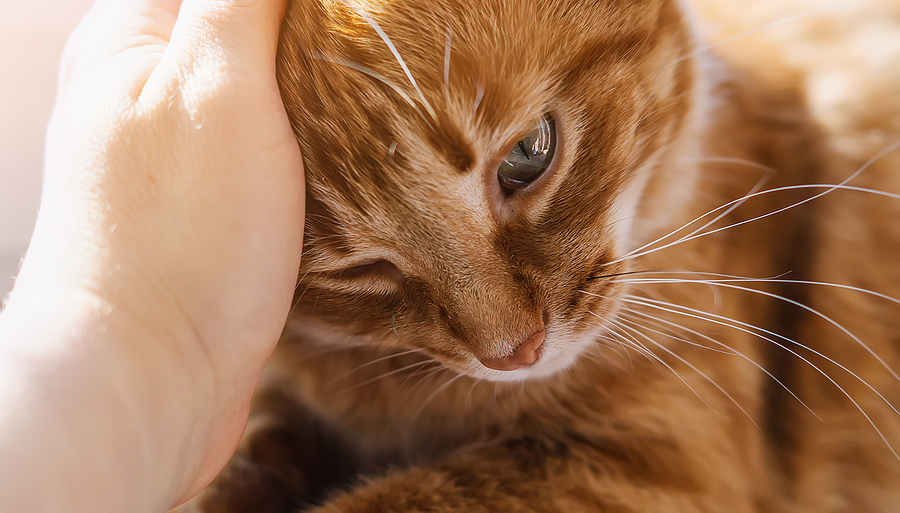When I was a child, I was fascinated by the story of Dr. Doolittle and dreamed about the exciting life I could live if I could only talk to animals. I think it was this story that led me to becoming a veterinarian, with a lot of help from some special feline family members along the way. Like most people, I have always considered my animals to be family members, and of course, if I could only understand their language I could provide the very best of care for them.
Understanding how animals express signs of pain is perhaps the most important “language” of all, and I was inspired to read about a recent study that has finally unlocked this mystery to help cats with osteoarthritis1.
Osteoarthritis is a painful and surprisingly common feline condition. In fact, in one study 61 percent of cats 6 years of age and older had osteoarthritis.2 In another study, the condition was diagnosed in 90 percent of cats older than 12 years.3
However, in a recent survey of cat owners, even though 45 percent of cat owners had observed behaviors in their cats that were consistent with osteoarthritis, they did not make that association.4 Perhaps they assumed that the behaviors were signs of getting older. Many pet owners were unaware that their cat could actually develop osteoarthritis.
Of course, a chronic condition such as unrecognized osteoarthritic pain changes many aspects of the cat’s life and behavior. If effective treatment isn’t provided, pain progresses in frequency, duration, and severity, and the cat naturally withdraws. Eventually, chronic pain results in emotional effects, and the cat is unable to play or interact with their family anymore, which is a very sad situation for everyone.
In the recent study I mentioned earlier that unlocked the language of pain in osteoarthritic cats1, the researchers developed and tested a simple 6-question checklist of common feline behaviors. When tested statistically, the checklist identified osteoarthritic pain in cats with remarkable accuracy, and the behaviors could be video recorded regularly at home using a smartphone. They are:
- Climbing up stairs
- Climbing downstairs
- Chasing moving objects
- Jumping up
- Jumping down
- Running
You can find more information to help screen your cat for signs of osteoarthritic pain online at https://www.zoetispetcare.com/checklist/osteoarthritis-checklist-cat.5,6
Your veterinarian is the best person to ask for advice about all aspects of your cat’s life and behavior, because they provide professional, compassionate, and science-based care tailored to the individual needs of your cat. It is important for cats to receive wellness checks regularly: at least annually throughout their adult life, then every 6 months for cats 10-15 years old and every 4 months for cats more than 15 years old.6
Cats are skilled at hiding signs of illness, so regular physical exams and lab work are vital to ensure that they enjoy the best of health. If there are signs that your cat could have osteoarthritis, you should ask your veterinarian about the latest FDA-approved treatment option for the control of pain associated with osteoarthritis in cats.
Going to the veterinary hospital can be a daunting prospect for some cats and their families, but there are some simple tricks to make the experience pleasant for everyone. First, make the carrier your cat’s favorite place to be all year round by leaving it out every day in a quiet, sunny spot; take the top off, so they can use it as a bed. You could even try putting one or two favorite toys in the carrier and lining it with a comfy blanket.
Ideally, teach the cat to go in the carrier on their own or use a food lure or special treat to have them choose to go in the carrier. If you’re going to physically place the cat in the carrier it should be followed with a special treat. Making car trips a regular part of your cat’s life means that they are less stressful for everyone.
Cats should travel on an empty stomach to prevent nausea or vomiting, and the carrier should be firmly secured so it doesn’t move around. Your veterinarian may even prescribe anti-nausea and anti-anxiety medications before the visit as a routine part of making the visit more comfortable and pleasant for your cat.
Cats are our family members, and by learning to speak their language we not only understand them better, but we are more able to help them when they need us most. If we partner with our veterinarian and look at things from our cat’s perspective, we can make sure we’re really meeting their needs and helping them live their happiest and healthiest lives.
References:
- Enomoto et al. Development of a checklist for the detection of degenerative joint disease-associated pain in cats. JFMS 2020; 22(12):1137-1147.
- Slingerland L, et al., Cross-sectional study of the prevalence and clinical features of osteoarthritis in 100 cats. Vet J 2011;187:304-309.
- Hardie EM, et al. Radiographic evidence of degenerative joint disease in geriatric cats: 100 cases (1994-1997). J Am Vet Med Assoc. 2002;220(5):628-632.
- Data on File, November Pet Owner 2018 KG Marketsense, Zoetis Inc.
- Is your cat showing signs of OA pain? Online tool, including interactive cartoons of the 6-question checklist – https://www.zoetispetcare.com/checklist/osteoarthritis-checklist-cat
- Cat Osteoarthritis pain Checklist – https://www.zoetisus.com/oa-pain/img/pdf/feline-oa-checklist-print.pdf.
- Ray et al. 2021 AAFP Feline Senior Care Guidelines. JFMS 2021; 23:613-638.
This article was reviewed/edited by board-certified veterinary behaviorist Dr. Kenneth Martin and/or veterinary technician specialist in behavior Debbie Martin, LVT.









